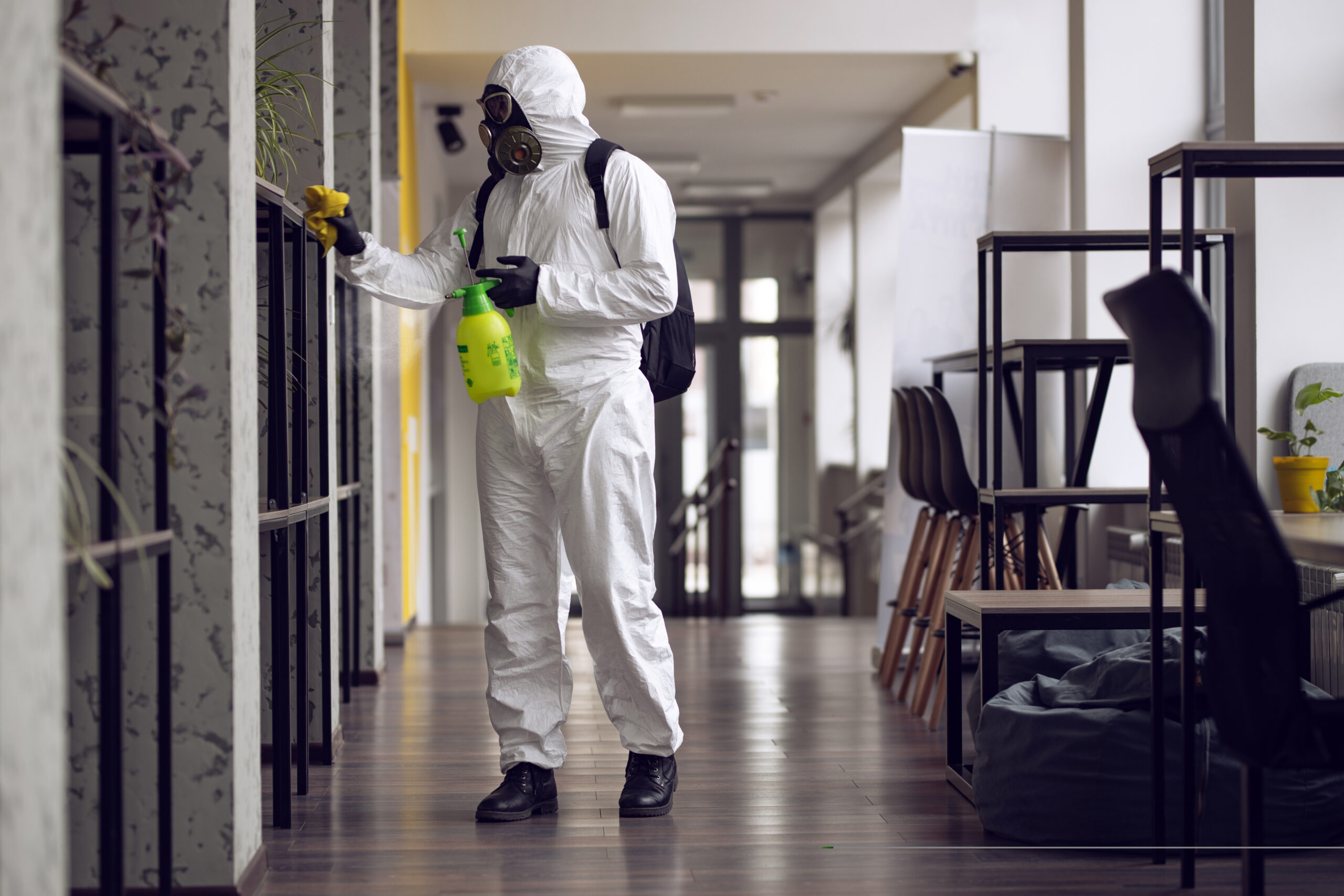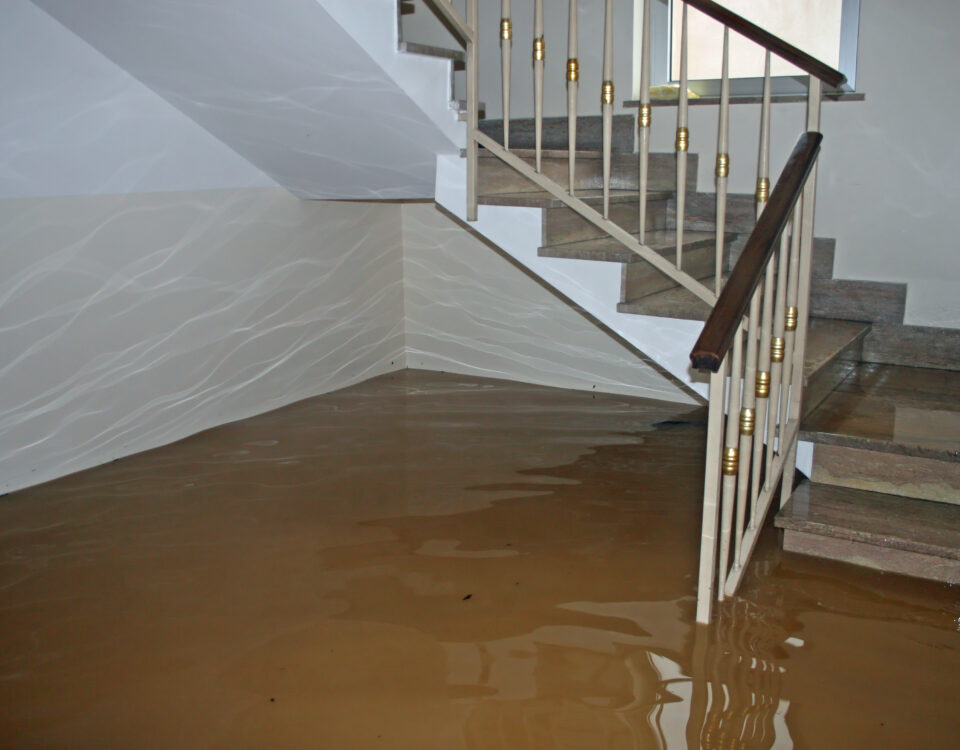
HVAC Mold Removal. What’s Involved & How To Prevent It
September 25, 2022
Detecting Water Damage With Thermal Infrared Cameras
September 25, 2022Awareness of the growing threat posed by mold infestation in homes, offices, and other indoor spaces continues to spread. Beyond the health and respiratory problems caused by so-called “Toxic Black Mold” even more benign strains living in the air can cause a wide range of medical complications. This is especially true for individuals with respiratory allergies, chronic respiratory conditions, and those who are genetically predisposed to chronic inflammation.
Sometimes an indoor mold problem is obvious. You might see black, gray, or other discolored patches in wet, humid parts of your home, or perhaps an unpleasant earthy odor in a basement crawl space. Though there are certainly other times when a mold problem can be hard to detect without professional diagnostics. Especially if the mold has found a way to propagate inside your walls or other hard to see spaces.
One possible sign of an undetected mold problem in your home or office could be the presence of Phorid flies, sewer flies or some other gnats or bugs.
What Are Phorid Flies, Drain or Sewer Flies?
At first glance, Phorid flies are small and seemingly benign, they look like little gnats. Some people even call them drain flies, sink flies, filter flies, sewer flies, or sewer gnats. Chances are you’ve even seen them before. They look like tiny flies that are roughly in between the size of a common black house fly and an annoying fruit fly. They look like a slightly larger fruit fly, without the telltale red eyes.
Phorid flies can also tend to have an erratic manner of flying, in that if you attempt to swat them, they will often choose to run away rather than fly away as most other flying insects would do. This is particularly odd as they do indeed have the ability to fly.
The Phorid Fly Lifecycle
Unfortunately, phorid flies are also very good at quickly establishing a presence in indoor spaces. This is often because female phorid flies can lay up to 40 viable eggs in as little as 12 hours. The eggs can then hatch into their larval stage in as little as one day! Female phorid flies also can lay roughly 500 eggs in their life.
Phorid fly larvae develop fastest in the presence of moist conditions with decomposing organic matter nearby. This includes things like fermenting fruits, garbage containers, rotten vegetables, improperly stored meats. Even some organic glues and paints made from all-natural materials can serve as a viable breeding site for a large infestation of larval phorid flies.
These essentially give the larvae the moisture and food they need to develop into adult phorid flies in as little as 14 days. Though cool, dry conditions can slow the larval maturation process to nearly 40 days. So, the speed at which an indoor phorid fly infestation develops can also be an indicator of conditions inside walls, wet walls, or other parts of your home.
Are Phorid Flies The Same As Drain Flies?
Though it’s worth noting that phorid flies can thrive in other conditions. This includes things like slow drains with organic buildup in or around the gooseneck. This might be part of the reason why some people call phorid flies “Drain Flies.”
How To Phorid Flies Get Into A Home Or Office?
Phorid Flies can also infiltrate your home if there are dumpsters, recycling bins of garbage cans near an open window, or a frequently used access door. Sometimes a phorid fly problem will persist near a dumpster for weeks or even months. Once a few reproductive females enter an apartment or office building, they can then look for other areas to exploit and set up a larval infestation.
Do Phorid Flies Like Mold & Fungus?
Of course, the moisture and warmth that phorid fly larvae need to thrive are also very similar to the conditions mold spores need to establish a thriving colony. So, it should come as no surprise that these versatile nuisance insects can also adapt to live in fungal conditions.
How Can Phorid Flies Be A Sign Of Mold?
The ingenuity and persistence of phorid flies mean you are likely to see a few in your home from time to time. It’s when you start seeing them frequently and in increasing numbers that you should be concerned about. Especially if their numbers start to rapidly increase in wet areas like in the bathroom, laundry room, a basement crawl space, or near the “Wet Wall” that carries your home’s primary plumbing pipes.
What Are Other Signs Of Mold?
Mold is a type of fungus that occurs everywhere in nature. Mold releases microscopic spores into the air which are carried on the wind. When they find a moist, warm area they can establish a colony. While mold colonies do best on porous surfaces like wood and even drywall, they can thrive on smooth hard surfaces with sufficient moisture.
As a mold colony starts to grow it starts to increasingly affect the surrounding environment. This can cause noticeable changes in color as well as odors caused by mold spores and potentially dangerous mycotoxins.
Signs of Mold In Your Home Or Office
Anyone or more of the following things can be a sign of a mold problem in your home or office. When combined with the annoying, persistent presence of phorid flies, they should be taken as a red flag for a serious mold infestation.
- Discolored patches on surfaces and porous materials
- A musty or earthy odor localized in one or two rooms
- Discolored spots near faulty vents
- Discolored spots on woodwork and window sills
- Loose patches of wallpaper
- Someone with respiratory allergies has started having problems
- People wheezing, sneezing and coughing frequently
Can I Remediate Mold On My Own?
If you’ve noticed increasing problems with phorid flies and other signs of a potential mold problem, there is a good chance that the active mold colony has advanced to a state that can be hard for you to effectively remediate on your own. Even if you do happen to find the mold colonies, trying to remove them and clean the area with consumer-level cleaning products might be impossible. Not to mention the risk of disturbing the colony and releasing more spores into the air, which could later colonize into other parts of your home or office.
Rather than risk these complications, it’s best to seek out professional mold testing and remediation. The cost is usually low, and you can rest assured that the mold and phorid flies will be gone.
See articles of mold removal




